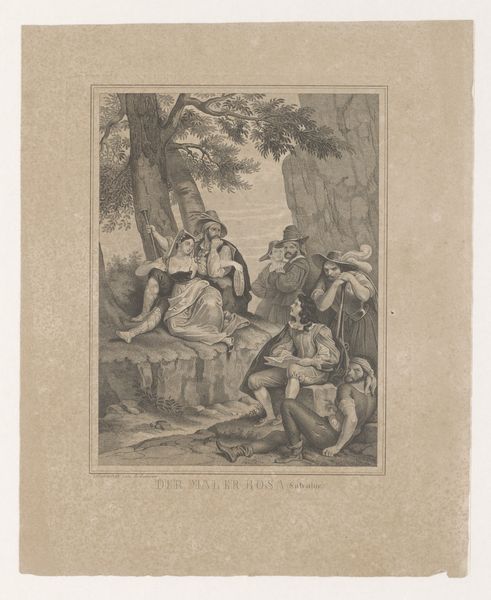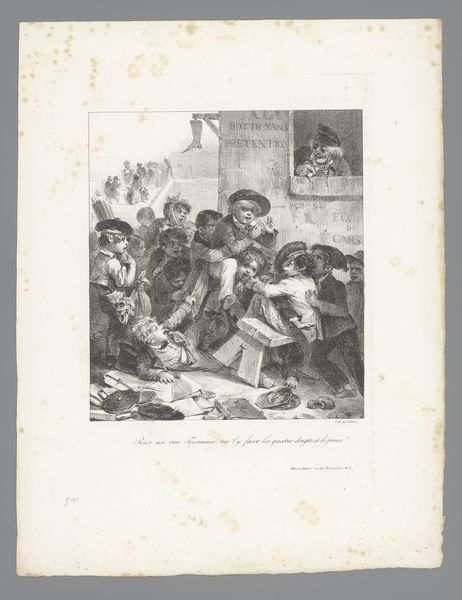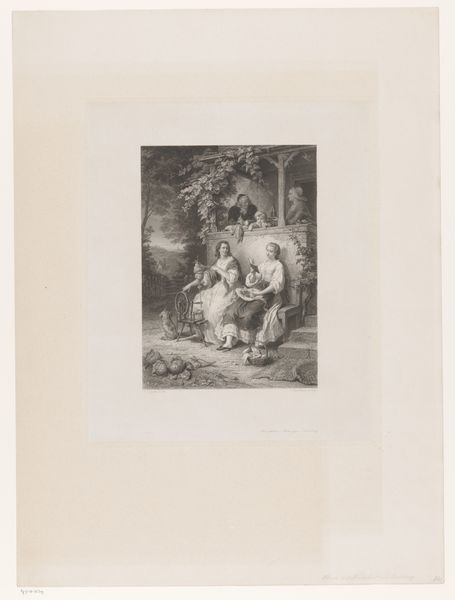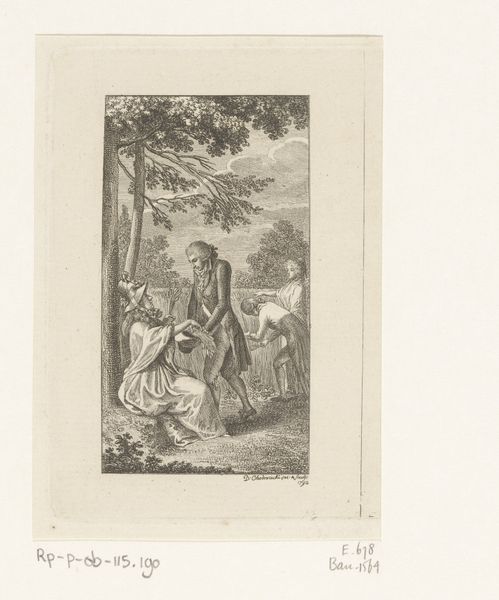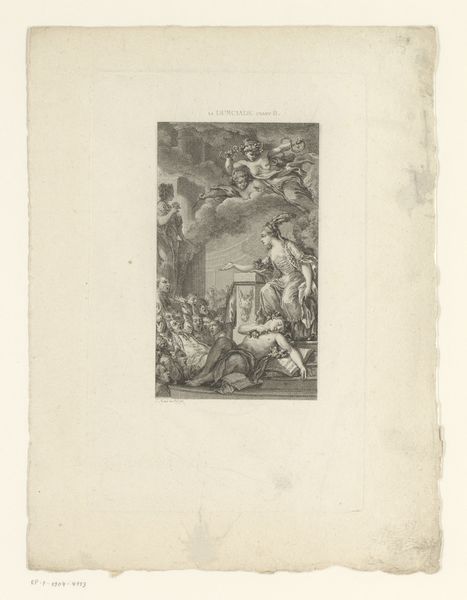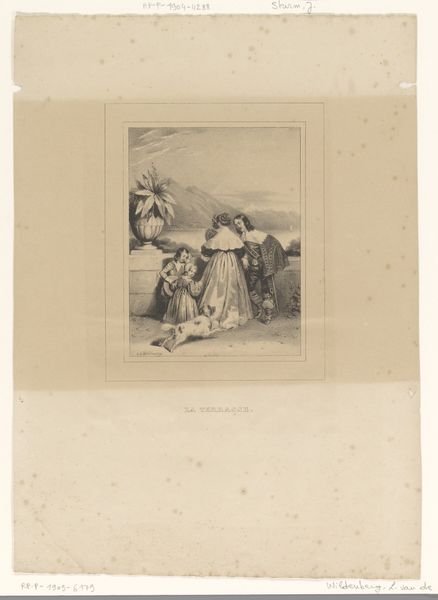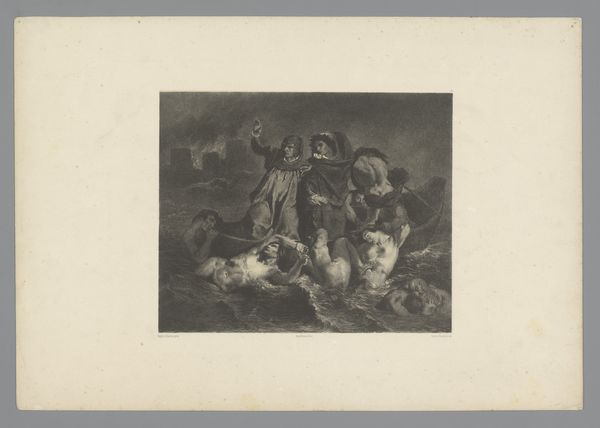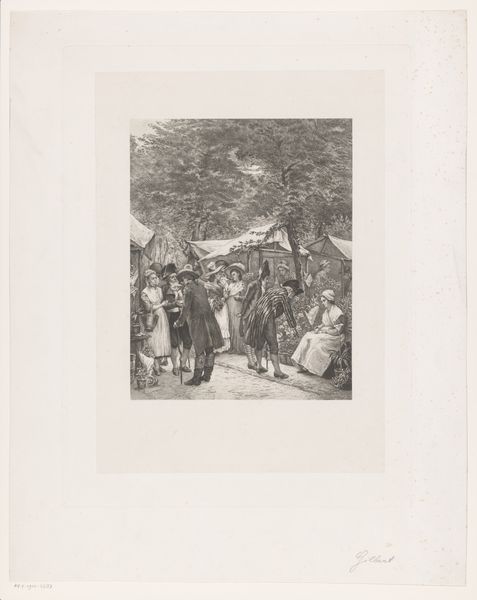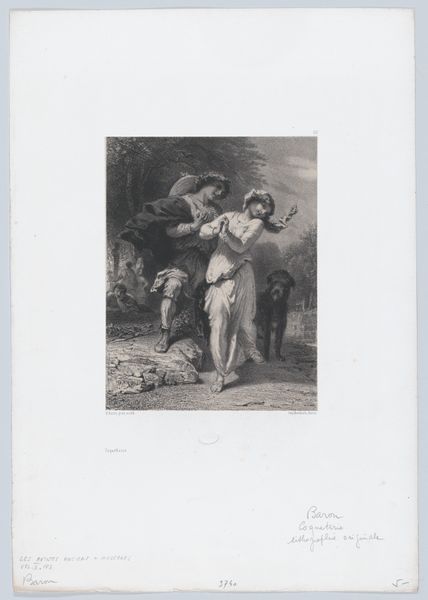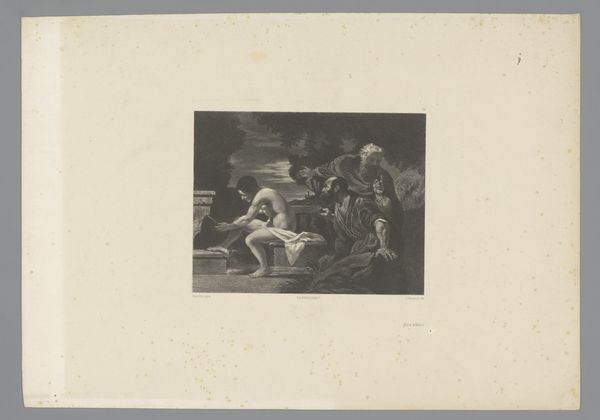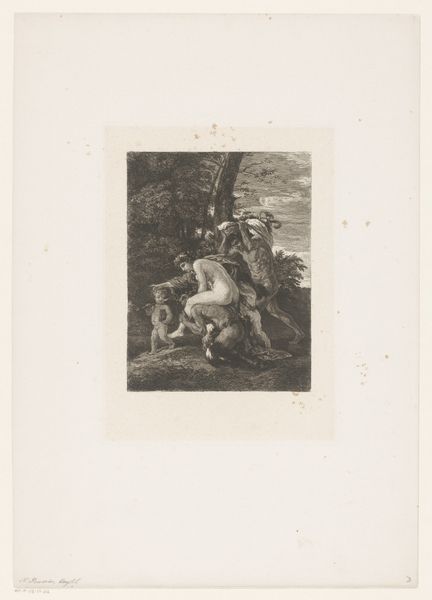
Vijf mensen zittend aan een vijver waarin drie engeltjes baden 1846 - 1862
0:00
0:00
adolphemouilleron
Rijksmuseum
print, paper, ink, engraving
#
aged paper
#
pale palette
#
ink paper printed
# print
#
landscape
#
figuration
#
paper
#
ink
#
genre-painting
#
academic-art
#
engraving
Dimensions: height 450 mm, width 312 mm
Copyright: Rijks Museum: Open Domain
Curator: What strikes me first is this pervasive dreaminess. A little unsettling, wouldn't you say? Editor: Precisely. Now, this print, made with ink on paper, is titled "Five People Sitting at a Pond Where Three Angels are Bathing". It dates back to somewhere between 1846 and 1862. It is attributed to Adolphe Mouilleron and it currently resides at the Rijksmuseum. Curator: Dreamy, but almost…theatrical? I mean, look at the composition! The figures arranged as though on a stage, the pond functioning as a sort of baptismal font for cherubic…urgh, darlings. What’s the cultural backdrop here? It feels heavy with significance. Editor: Indeed, Mouilleron places us squarely within the visual language of Academic art. There is a distinct striving to evoke idealised beauty through carefully choreographed forms. Observe how this connects to familiar visual traditions from antiquity and the Renaissance—nymphs, classical architecture faintly echoed in the background, angels. There's an intentional continuity at play. The composition has echos of early Renaissance frescoes. It’s designed to conjure a feeling of timeless, somewhat artificial harmony. Curator: Artificial being the operative word, maybe? Though the angels are rather cute—cloying almost! What do they even signify here? Are they childhood innocence, grace? I struggle to reconcile that sentiment with the overt stylisation. The figures have this carefully staged arrangement... it’s all a bit studied. Editor: The angels themselves play multiple roles—yes, innocence is certainly one. Simultaneously they function as eroticised putti and also serve to heighten a sense of Christian allegory. They create an idealized, prelapsarian space. They suggest a space prior to, or untouched by, original sin and reflect humanity's long and often tortured journey towards spiritual redemption. All carefully mediated through academic convention, I will concede! Curator: It's this precise tension between convention and possible deeper significance that truly hooks me. Mouilleron isn't simply producing pretty images but drawing upon something primal—the enduring human yearning for transcendence, but seen through a haze of academic rigor. A visual manifestation of longing. Editor: Nicely put. It reminds us that these artistic conventions and inherited symbols continue to be tools we use to structure our world. In other words, tradition continues to be relevant today.
Comments
No comments
Be the first to comment and join the conversation on the ultimate creative platform.



